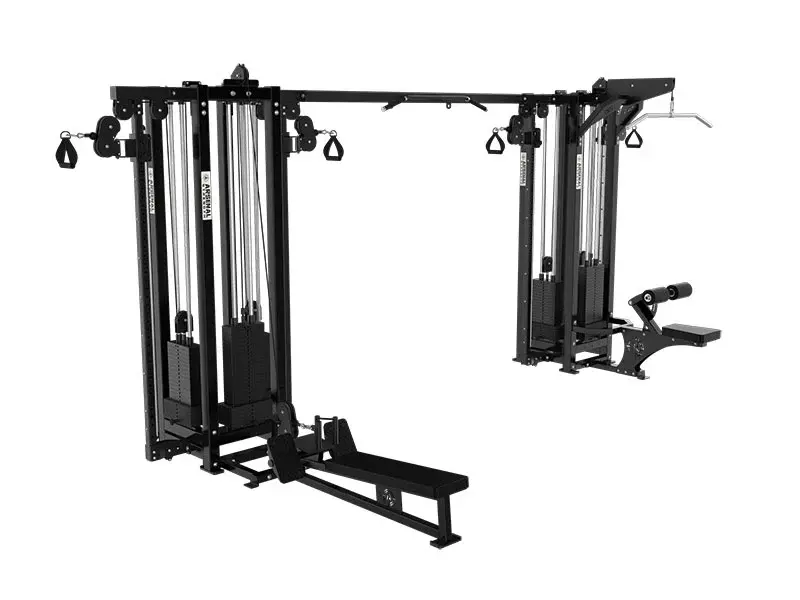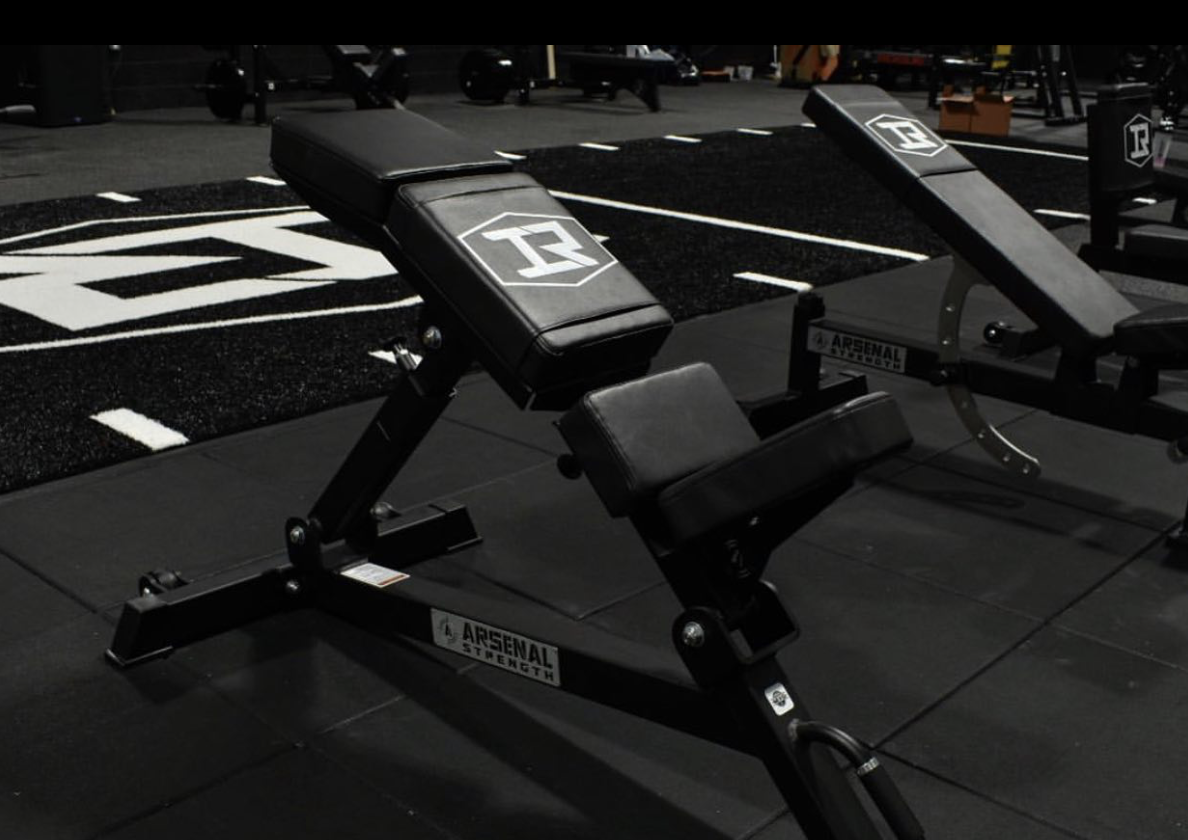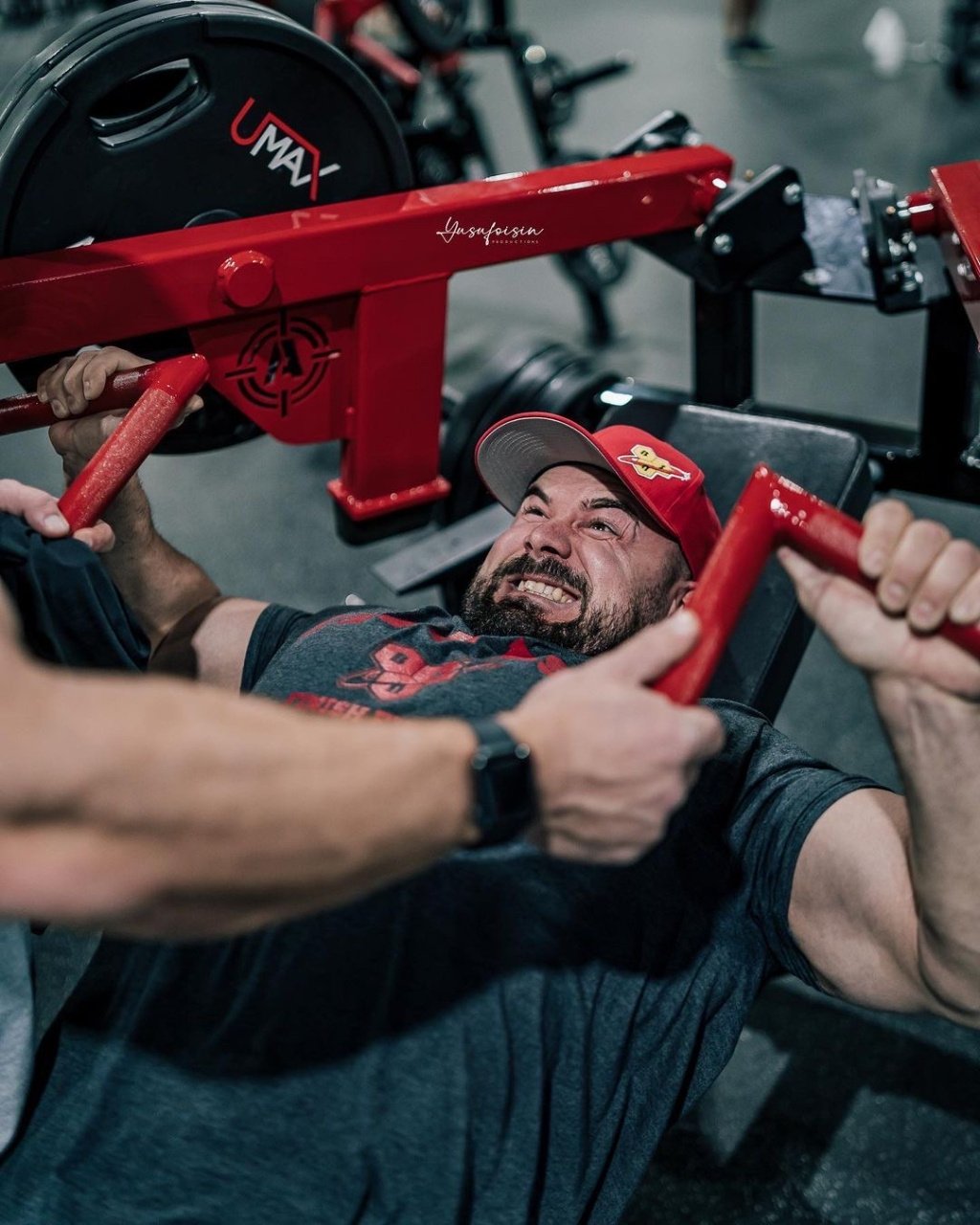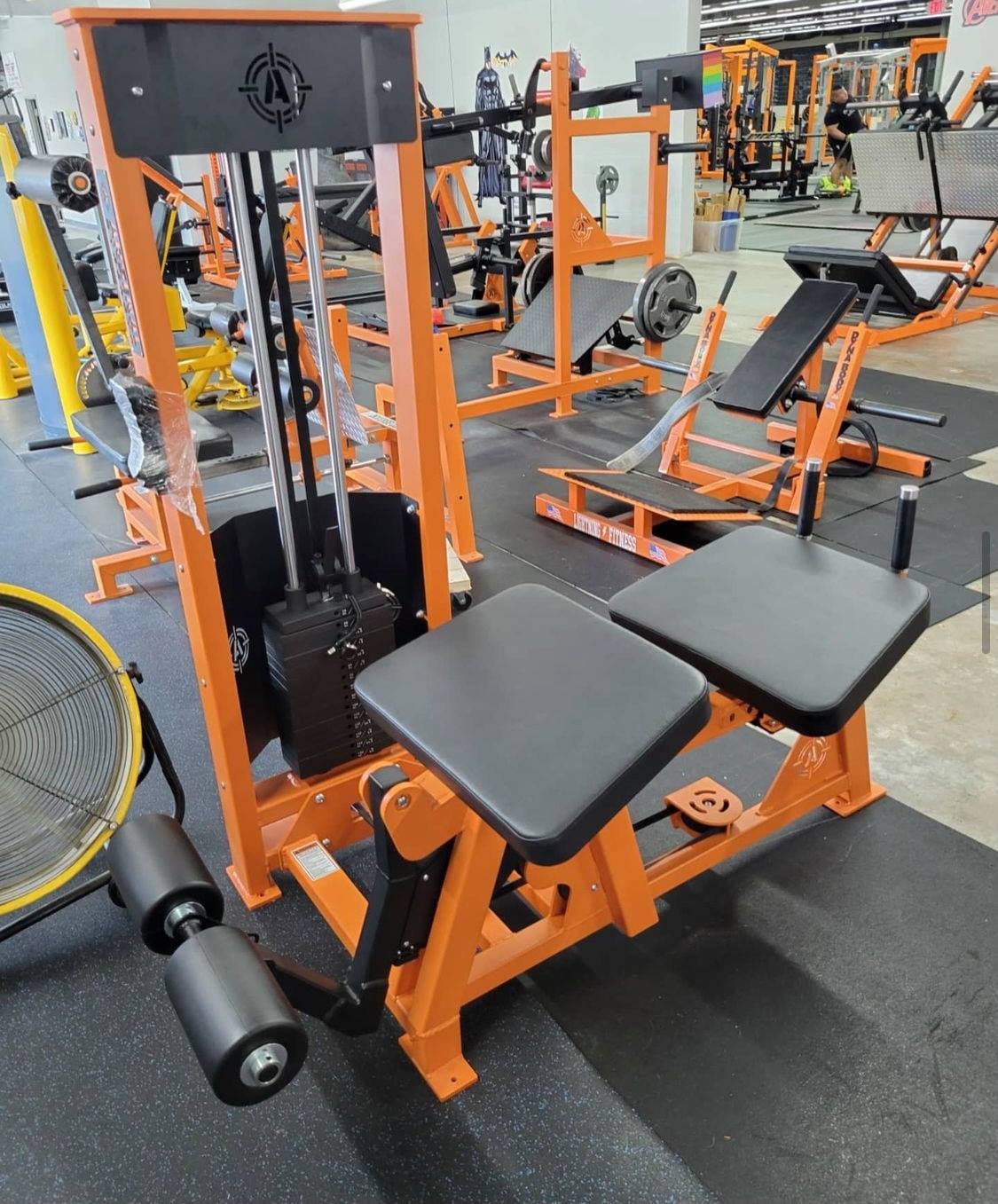Top Alternatives to Bent Over Row
Strengthen Your Back Without the Strain
Searching for a bent over row alternative? You’re in the right place. Whether it’s due to lower back concerns or simply the desire for variety in your workout, finding the right replacement exercises can be key to maintaining back strength while avoiding strain. In this article, we’ll explore a range of exercises that offer the benefits of bent over rows without the added risk. Keep reading to discover targeted movements that not only challenge your back muscles but also acknowledge the rest of your body’s needs.
- Bent over rows are a gym darling for targeting a galaxy of muscles (including lats, traps, and deltoids) and help you stand taller, but they’re also a nemesis for your lower back when the going gets heavy.
- Fear not, the gym is full of back-friendly alternatives like seated cable rows (your spine’s BFF), T-bar rows (for those who like their back workout with a side of lumbar peace), and the bodyweight charm of inverted rows that let you pitch the strain without ditching the gain.
- Maintaining proper form is key whether you’re taming the T-bar row or the single-arm dumbbell row. Progressive overload and variety in your exercises will keep your muscles guessing and your workouts fresh – it’s like a salad bar but with weights and less lettuce.
Discovering the Benefits of Bent Over Rows
Let’s begin by acknowledging the deserved acclaim for bent over rows. These exercises are a mainstay in the workout regimens of many fitness enthusiasts and with a good cause. They engage an impressive array of muscle groups, which includes:
- latissimus dorsi
- trapezius
- posterior deltoids
- rhomboids
This allows you to reap the benefits of multiple workouts through one dynamic exercise – talk about multitasking efficiency!
It’s not just brute strength that bent over rows bestow upon their practitioners. They also enhance your posture significantly. By supporting muscles crucial for spine alignment and shoulder retraction, these exercises contribute towards standing upright more naturally. They offer increased energy expenditure that is beneficial for weight control while simultaneously strengthening.
- lats
- rhomboids
- trapezius
- rear deltoids
- core stability
In pursuit of crafting the ultimate bent over row technique and achieving formidable upper body strength, barbell bent over rows take center stage alongside complementary movements such as pull ups.
The Need for Alternatives: Protecting Your Lower Back
Pause for a second before you head to the gym for your bent over rows workout. There’s something to consider: while effective, they can be tough on the lower back, especially with heavier weights. To prevent any discomfort or injury that could derail your fitness progress, it’s wise to have some backup exercises in mind.
Consider these alternatives:
- Inverted Rows
- Seated Cable Rows
- T-Bar Rows
- One-Arm Dumbbell Rows
- Chest-Supported Rows
Incorporating these options into your exercise routine can offer relief to your back yet still target those crucial muscles effectively.
Explore different ways of achieving similar results without straining the lower back. Alternatives like band rows and incline dumbbell rows are crafted specifically to minimize lumbar strain while thoroughly engaging upper back muscles. The incline version of a dumbbell row reduces stress on the lower spine and provides opportunities for grip variation which aids in engaging different areas of the back muscle group. Ready then? Let’s dive into these gentler options!
Seated Cable Row: A Safer Bet for Your Spine
Kicking off our list is the seated cable row, often considered the more user-friendly relative of the bent over row. It enables a comprehensive range of motion for engaging back muscles without imposing strain on your lower back. The magic lies in its seated position, which alleviates stress by avoiding the hinged posture demanded during bent over rows, thus presenting it as a low-impact option that’s gentler on your lumbar region.
Don’t be misled by “low-impact” – it’s not synonymous with ineffective. The cable row packs quite a punch when it comes to working out those muscles. Offering unyielding tension across every phase of movement and assuring targeted exertion upon back muscle groups, particularly concentrating on the lower latissimus dorsi (lower lats). Enhancing pulling strength, crucial for elevating weightlifting performance, also falls within its realm of benefits. Sounds appealing? Absolutely! Remember though: much like other exercises, mastering form determines how beneficial your sessions with this apparatus will be.
Perfecting Your Form in Seated Cable Rows
To execute seated cable rows with proper form, it’s essential to focus on your back posture. Keep a neutral spine throughout the movement, avoiding any excessive stress on the lower back by ensuring that your back forms a straight line from your head down to your tailbone.
During the rowing phase:
- Draw the handle toward you until it is slightly above your belly button while keeping stable and refraining from rocking back and forth.
- Preserve a complete range of motion and ensure that knees remain gently flexed
- Actively bring shoulder blades together and downward as you pull (scapular retraction)
This guidance is particularly vital for those who are new to this exercise since it increases its effectiveness.
For novices and experienced users, sustaining a 90-degree angle between their upper body and floor during seated cable rows is critical. Proper alignment starts with assuming an accurate starting position at each repetition.
Adjusting Resistance for Progressive Overload
Let’s delve into the importance of resistance adjustment in seated cable rows. For continual muscle growth, it’s crucial to progressively overload your muscles, and managing the resistance is central to this principle. Novices should embark on their journey with lighter weights and incrementally add more as they grow stronger. This strategy helps prevent injuries while ensuring that proper form is maintained throughout.
For seasoned practitioners of the cable row who are looking to up their game even more. There are various techniques to intensify engagement of the back muscles.
- Initiate each rep with a slight forward lean for an increased lat stretch
- Repositioning the chest pad farther away can offer a heightened level of difficulty
- Implement one-arm rows for unilateral focus
- Integrate pauses at peak contraction during your row
- Decelerate during the release phase
Find out which modifications best suit you, but always push yourself beyond comfortable limits to sustain continuous improvement!
Inverted Row: Utilizing Body Weight for Back Development
Progressing our rundown of exercises that are kind to the back, we move onto the inverted row. This particular workout serves as a converse variant to the barbell row and stands as an efficient substitute for alleviating stress on your lumbar spine. The muscle groups activated by this exercise through bodyweight resistance include:
- upper body
- glutes
- hamstrings
- core
This ensures you can strengthen these areas with diminished risk to your lower back.

The versatility of inverted rows is another benefit worth noting. Modifying how challenging they are can be achieved by changing your body’s inclination or opting for grips either overhand or underhand. Equipment variations such as bars or TRX systems influence difficulty levels. Utilizing rings or TRX also encourages more significant engagement from both core and shoulder stabilizers, while simultaneously offering movement flexibility that reduces strain on joints in wrists, elbows, and shoulders alike. Proper setup remains essential to harnessing all benefits associated with inverted rows fully.
Setting Up for Success with Inverted Rows
Begin your journey with inverted rows by adopting an overhand grip that exceeds the width of your shoulders slightly. This positioning may be tailored to fit each individual’s unique comfort and strength capacities. You can alter the intensity of the inverted row by changing the height at which you set up the bar – normally placed at chest level, raising it will lessen difficulty while lowering it adds more challenge.
Aim to effectively engage your back muscles without jeopardizing the safety of your lower back during this exercise. Dedicate time to discover a setup that aligns with your body’s needs. Feel free to try varying grips and heights for the bar until everything clicks into place.
Indeed, only when an exercise complements you perfectly does it become truly beneficial!
T-Bar Row: Building a Powerful Upper Back
Transitioning to the T-bar row, this robust exercise zeroes in on strengthening the upper back and latissimus dorsi with a reduced load on the lower spine. The engagement of mid trapezius and rhomboid muscles through T-bar rows promotes scapular retraction and stability, thus helping prevent potential shoulder injuries.
It isn’t solely about fortifying strength. For maximum impact from your workout session, incorporating T-bar rows near the start of an upper body or back routine is advisable when energy levels are high and muscle fatigue hasn’t set in yet. Ensure you prioritize proper form above all else to fully harness the benefits that come with performing bar row exercises effectively.
Mastering the Technique
Maintaining correct technique is paramount in any workout. When performing the T-bar row, position your feet at shoulder width and slightly bend your knees. Ensuring that you have a straight back is crucial for spinal protection while executing the lift. Though it might seem like there’s much to retain, these steps will become instinctive with consistent practice.
Ensure that you keep your core engaged and maintain a flat back during each phase of the exercise to ensure both stability and safety. Proper form isn’t solely about avoiding injuries. It also guarantees that the targeted muscles are being effectively worked on – in this case, those within your upper back. Dedicate time to perfecting your posture before embarking on this movement so as to maximize the benefits for building up a strong upper back through bar rows.
Variations of Grip for T-Bar Rows
Having mastered the technique, it’s important to consider how your grip can isolate particular back muscles and cater to your comfort. Using an overhand grip slightly beyond shoulder width is ideal for engaging the latissimus dorsi and middle trapezius.
Should you wish to increase activation of your biceps during the exercise, opt for an underhand grip with palms facing upwards. This variation not only works out your back, but also gives additional stimulus to your biceps. Play around with various grips until you discover one that suits you well and focuses on the muscle groups you aim to develop.
Chest Supported Machine Row: Isolation Without the Pain
Moving on to the chest-supported machine row, this particular exercise strikes an ideal balance by isolating back muscles with added support for the core and spine. Consider it akin to having a dedicated coach for your back – steering those muscles through their optimal range of motion while prioritizing proper form throughout.

Employing a chest supported row apparatus specifically targets essential muscle groups such as the latissimus dorsi and rhomboids, minimizing any stress on the spinal column. When contrasted with alternative exercises like the incline dumbbell row, you’ll find that using a chest-supported machine affords enhanced muscle isolation given its design enables both movement guidance and upper body support. This culminates in not only an efficient but also a more comfortable workout session targeting your back.
Single Arm Dumbbell Row: Correcting Muscle Imbalances
The single arm dumbbell row is an uncomplicated yet potent exercise worth incorporating into your routine. It provides several distinctive advantages, including:
- Equalizing strength on both sides of the body to correct muscle imbalances
- Bolstering stability
- Preventing dominance by the stronger side during complex lifts.
Focusing primarily on the latissimus dorsi muscles, these rows assist in creating a wider back as they isolate and activate this area with greater efficiency. Accurate form remains imperative when performing single-arm dumbbell rows. To execute them correctly and reap their full benefits, one must use a bench for support while maintaining a neutral spine posture throughout each repetition’s complete range of motion.
Pendlay Row: Precision and Power
Now, let’s shift our attention to the Pendlay row, a distinct version of the bent over row that delivers an intense and precise workout for your major back muscles while minimizing strain on your lower back. It involves a pronounced hip hinge with a more horizontal back position, enforcing strict technique by requiring you to lift the barbell from complete rest at the beginning of each repetition.
The stringent form required by this exercise might seem daunting. It is designed for explosive power engagement and discourages ‘cheating’ through momentum usage. This makes it an exceptionally effective movement for enhancing muscle growth and boosting strength levels. So if you’re seeking precision coupled with formidable power in your workout regimen, incorporating the Pendlay row could be an excellent choice to enhance your routine focused on strengthening those back muscles.
Renegade Row: Core Engagement and Stability
Turning our attention to the renegade row, this exercise excels in fortifying core stability and creates a powerhouse of core strength when executed with correct technique. It is an integrated movement engaging several muscle groups at once, including:
- stabilizing muscles in the shoulders and chest
- the rectus abdominis
- transverse abdominis
- obliques
Not only does it bolster unilateral back power but also improves overall core strength.
The renegade row not only supports maintaining proper alignment across various stances, but also minimizes injury risks by strengthening core stability. To accommodate differing levels of physical fitness, adjustments can be made such as lowering weight or altering plank form. Cyclists find particular advantages from this comprehensive workout – truly a multifaceted exercise!
Resistance Band Row: Versatility and Portability
It’s time to shine a spotlight on the resistance band row, an adaptable and convenient exercise that makes a great addition to your workout routine. Whether you choose seated or standing positions for your band rows, you can amplify the challenge by opting for thicker bands or incorporating unilateral rows.
The advantages of using resistance bands are numerous.
- Their lightweight nature and portability mean setting up this exercise is straightforward wherever you may be.
- They facilitate a complete range of motion which aids in enhancing flexibility, mobility, as well as promoting healthier joints.
- Performing resistance band rows also has calorie-burning potential – it’s estimated that one could burn about 100 calories during every 10-minute session at sufficient intensity levels.
Elevating Your Workout with Incline Dumbbell Row
The incline dumbbell row must be highlighted as a significant exercise for developing the upper back. The muscles that benefit include:
- Rhomboids
- Trapezius
- Latissimus dorsi
- Neck
- Rear deltoids
This variation reduces stress on the lower back by positioning you prone on an inclined bench.
You can modify the angle of this bench from 40 to 70 degrees to better fit various body shapes and influence muscle activation during the exercise. For optimal results while performing an incline dumbbell row, it’s essential to preserve a complete range of motion and choose weights that enable proper execution without momentum-based assistance.
Hence, incorporating the incline dumbbell row into your fitness regime could significantly improve your workout effectiveness.
Final Thoughts on Barbell Row Variants
The realm of back-strengthening exercises encompasses more than just the well-known bent-over row. Consider incorporating these alternative exercises into your regimen.
- Seated cable row
- T-bar row
- Chest-supported machine row
- Single-arm dumbbell row
Each substitute offers its own advantages, such as diminished stress on the lower back and enhanced stability along with better muscle activation.
Adding a mix of movements to your workout routine can invigorate your training sessions and confirm that you’re working out your muscles effectively. The objective is not merely to gain strength, but also to do so in a manner that is both safe and maintainable for long-term health. So feel free to vary your exercise selections, explore new options, and settle on what suits you best while pursuing fitness goals. Enjoy your workouts!
Our quest was driven by the desire to uncover alternatives to bent over rows, and we have discovered a treasure trove of excellent options. The cable row offers a secure option that puts minimal strain on your body, while the T-bar row specifically targets the upper back without putting much pressure on your lower back. We’ve delved into bodyweight exercises such as the inverted row and techniques designed to correct muscle imbalances like those achieved with the single-arm dumbbell row.
To sum it up, achieving a robust and healthy back is possible through various methods. The optimal exercise is one that aligns with your individual needs, physical condition, and workout objectives. Feel free to experiment with these different substitutes in pursuit of wellness—and remember, the path towards fitness should be approached like an enduring race rather than a rapid dash. Together let’s continue our commitment to lifting weights, acquiring knowledge, and building ever-greater strength.
Frequently Asked Questions
What are some bent over row alternatives?
Incorporate a variety of exercises such as the seated cable row, inverted row, chest supported machine row, or T-bar row to maintain diversity and challenge in your workout routine.
Why do I need bent over row alternatives?
You need alternatives to bent over rows to prevent lower back strain, address potential weak links, and add variety to your workout routine.
So mix it up and keep those muscles guessing!
What are the benefits of the seated cable row?
Engaging in the seated cable row exercise is beneficial for targeting your back muscles, particularly your lats, while minimizing the risk of lower back injury. It enhances your pulling power and provides a solid workout.
This makes it a highly advantageous activity – you strengthen effectively while protecting your posture!
How can I correct muscle imbalances in my back workouts?
Give the single-arm dumbbell row a try to correct muscle imbalances in your back workouts. It helps ensure both sides of your body are worked equally.
How can I incorporate these exercises into my workout routine?
Incorporate these alternative exercises into your routine to either supplement or substitute for bent over rows, tailored to your specific fitness objectives and proficiency.
Feel free to innovate and diversify your workout regimen with these options.
Additional Bent Over Row Resources:
Arsenal Strength Smith Machine
Back Training Featuring The Flex Lewis






